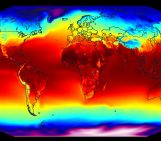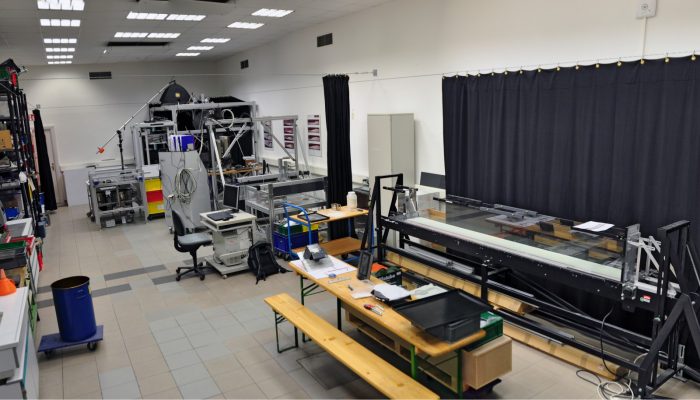
For our next Minds over Methods, we go back into the laboratory, this time for modelling seismotectonics! Michael Rudolf, PhD student at GFZ in Potsdam (Germany), tells us about the different types of analogue models they perform, and how these models contribute to a better understanding of earthquakes along plate boundaries.

Credit: Michael Rudolf
Experimental seismotectonics – Seismic cycles and tectonic evolution of plate boundary faults
Michael Rudolf, PhD student at Helmholtz Centre Potsdam – German Research Centre for Geosciences GFZ
The recurrence time of large earthquakes that happen along lithospheric-scale fault zones such as the San Andreas Fault or Chile subduction megathrusts, is very long (≫100 yrs.) compared to human timescales. The scarcity of such events over the instrumental record of around 60 years is unfortunate for a statistically sound analysis of the earthquake time series.
So far, only few megathrust events have been monitored in detail with near-field seismic and geodetic networks. To circumvent this lack of observational data, we at Helmholtz Tectonic Laboratory use analogue modelling to understand plate boundary faulting on multiple time-scales and the implications for seismic hazard. We use models of strike-slip zones and subduction zones, to investigate several aspects of the seismic cycle. Additionally, numerical simulations accompany and complement each experimental setup using experimental parameters.
Seismotectonic scale models
In my project, we develop experiments that can model multiple seismic cycles in strike-slip conditions. Our study employs two types of experimental setups both are using the same materials. The first is simpler (ring shear setup) and is able to show the on-fault rupture propagation. The second is geometrically more similar to the natural system, but only the surface deformation is observable.
To model rupture propagation, we introduce deformable sliders in a ring shear apparatus. Two cylindrical shells of ballistic gelatine (Ø20 cm), representing the side walls, rotate against each other, with a thin layer (5 mm) of glass beads (Ø355-400µm) in between representing an annular fault zone. A see-through lid connected to force sensors holds the upper shell in place, whereas the machine rotates the lower shell. Through the transparent lid and upper shell, we directly observe the fault slip. We can vary the normal stress on the fault (<20 kPa) and the loading velocity (0.0005 – 0.5 mm/s).
The next stage of analogue model, features depth-dependent normal stress and a rheological layering mimicking the strike-slip setting in the uppermost 25-30 km of the lithosphere (see also Mehmet Köküm’s blog post). A gelatine block (30x30cm) compressed in uniaxial setting represents the elastic upper crust under far-field forcing. Embedded in the block is a thin fault filled with quartz glass beads. The ductile lower crust is modelled using viscoelastic silicone oil. The model floats in a tank of dense sugar solution, to guarantee free-slip, stress-free boundaries.
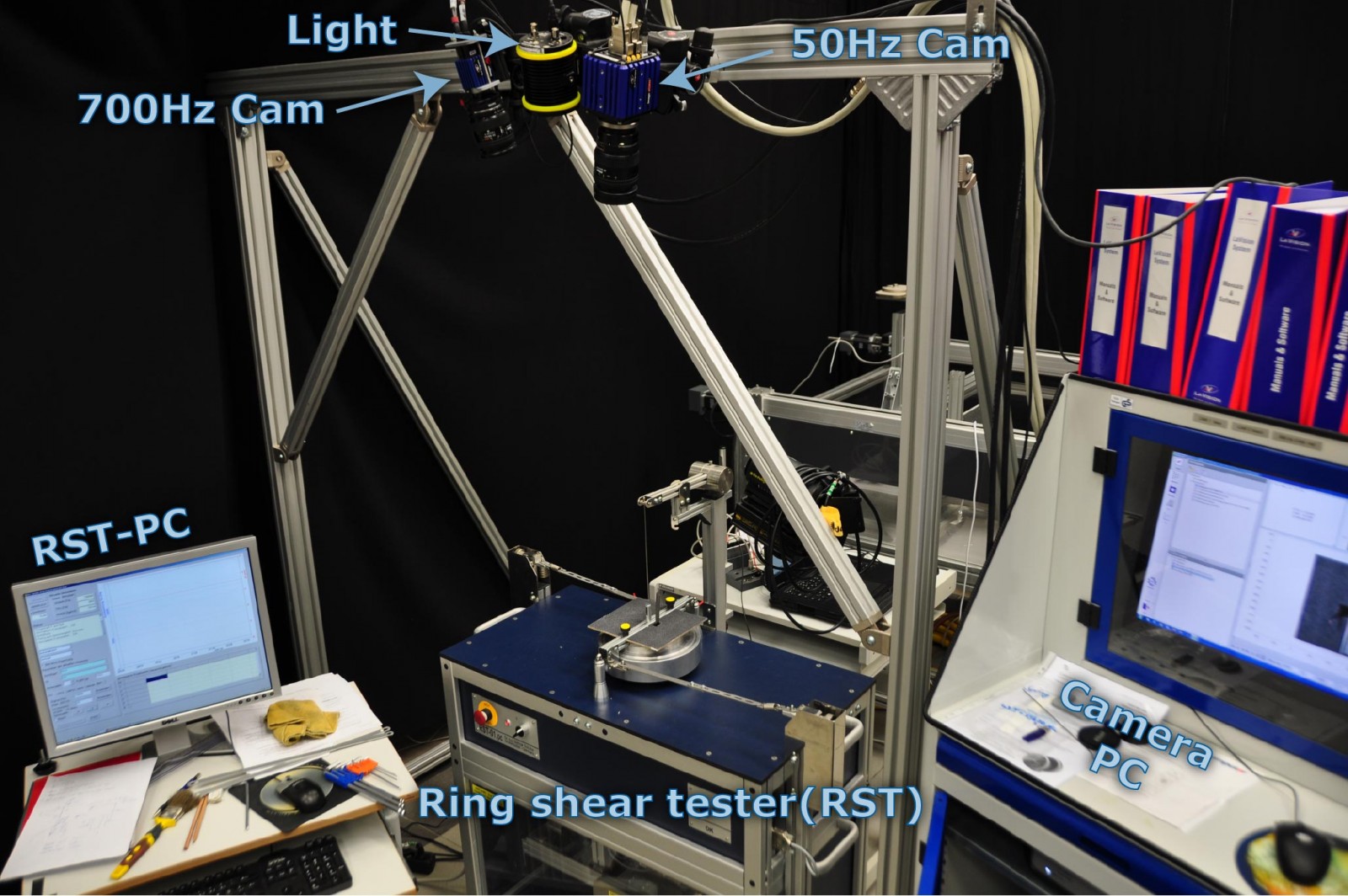
Figure 2 – Setup and monitoring technique during an experiment. Several cameras record the displacement field and the ring shear tester records the experimental results. Credit: Michael Rudolf
Analogue earthquakes
Both setups generate regular stick-slip cycles including minor creep. Long phases of quiescence, where no slip or very slow creep occurs, alternate with fast slip events sometimes preceded by slow slip events. The moment magnitude of analogue earthquake events is Mw -7 to -5. The cyclic recurrence of slip events is an analogue for the natural seismic cycle of a single-fault system.
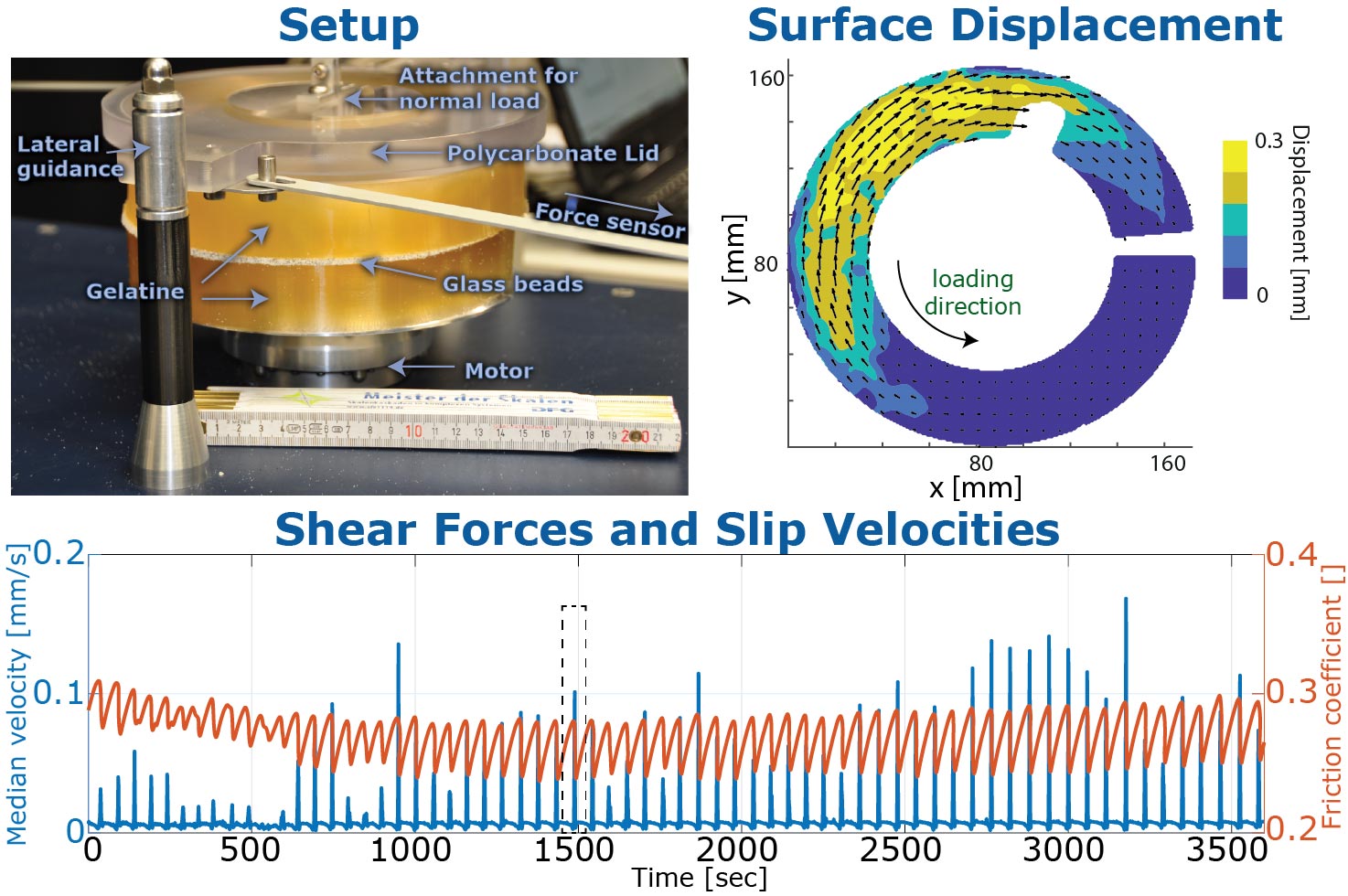
Figure 3 – Detailed setup and results from the ring shear tester experiments. The upper right image shows a snapshot of an analogue earthquake rupture along the fault zone. The plot shows the recorded shear forces and slip velocities over one hour of experiment. Credit: Michael Rudolf
Optical cameras record the slip on the fault and the deformation of the sidewalls. Using digital image correlation techniques, we are able to visualize accurately deformations on the micrometre scale at high spatial and temporal resolution. Accordingly, we can verify that analogue earthquakes behave kinematically very similar to natural earthquakes. They generally nucleate where shear stress is highest, and then propagate radially until the seismogenic width is saturated. In the end, the rupture continues laterally along the fault strike. Our experiments give insight into the role of viscoelastic relaxation, interseismic creep, and slip transients on the recurrence of earthquakes, as well as the control of loading conditions on seismic coupling and rupture dynamics.
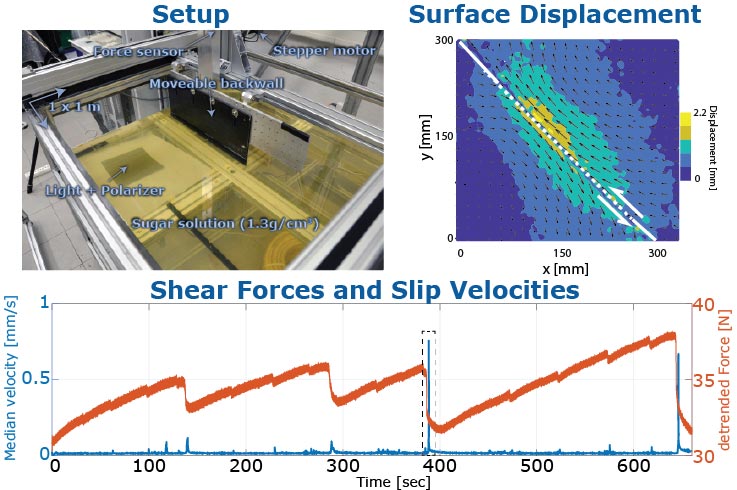
Figure 4 – Setup and Results for the strike-slip geometry. The surface displacement field is very similar to natural earthquakes. The plot shows that due to technical limitations of this setup, fewer events are recorded but the slip velocities are higher. Credit: Michael Rudolf
Future developments
Together with our partners in the Collaborative Research Centre (CRC1114 – Scaling Cascades in Complex Systems) we employ a new mathematical and numerical description of the fault system, to simulate our experiments and get a physical understanding of the empirical friction laws. In the future, we want to use this multiscale spatial and temporal approach to model complex fault networks over many seismic cycles. The experiments serve as benchmarks and cross-validation for the numerical code, which in the future will be using natural parameters to get a better geological and mathematical understanding of earthquake slip phenomena and occurrence patterns in multiscale fault networks.




